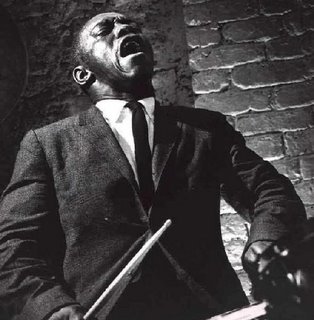The Sidewinder (Lee Morgan)
„The Sidewinder“ ist ein Album von Trompeter Lee Morgan , das 1963 beim Jazzlabel „Blue Note Records“ entstand und Morgan’s größter Erfolg wurde.
If one looks at the career of Lee Morgan to get almost never on an album by the trumpeter, which was established in 1963 after his return from a break in 1961: "The Sidewinder". describe But the value of this plate to first and foremost a look at Morgan's resulting career is necessary.
Lee Morgan on 10 July 1938 in Philadelphia, USA born and is considered early as an exceptional talent on the trumpet, because he is an incredibly courageous and virtuoso musicians. Much to bear and Morgan at's musical environment, Philadelphia was raised in the forties unlikely creative paving the jazz music is with many good musicians like the saxophonist John Coltrane , Benny Golson and Jimmy Heath , and his brothers Percy Heath on bass and Albert "Tootie" Heath on drums .
He visited during these years the "Mast Tree High School, a school that also many other prominent musicians will create. Even at this Time, Morgan, after the tragic accident of the trumpeter Clifford Brown, who had an accident in 1955 at the age of 26 years in a tragic accident, chosen as his successor.
The first time Morgan does, however, only as a member of Dizzy Gillespie's Big Band at the focal point of the jazz world. On that occasion also Alfred Lion and Francis Wolff, two German founder of the successful New York jazz label Blue Note to Morgan attention and take him immediately in 1956 under contract. So it is that it successfully with a young age of 18 years as at the time still quite unknown trumpet player goes into the jazz scene.
A highly successful appearance on Lee Morgan then in 1957 in receiving "Blue Train" by John Coltrane . Although Morgan takes only as a sideman-led Coltrane group, a secondary role is largely thanks to his solos that this plate Coltrane's most successful should be at this time and this success is only 8 years later by "A Love Supreme" should be offered. It turns out that Morgan is also very well placed, the music of other musicians to join and that during the recording of the album is seen that Coltrane and Morgan are also very good because they both have their early years in Philadelphia spent together, even if all the Coltrane 12 Jahre älter als Morgan ist und daher eher eine Rolle als ein Lehrer für ihn einnimmt. Er ist jemand, der überall etwas aufsaugt und dies zu seinem eigenen Stil verarbeitet.
Seine bis dato erfolgreichste Zeit sollte jedoch erst die Zeit bei Art Blakey und seinen „Jazz Messengers“ werden. Die Besetzung der Band zu dieser Zeit zählt noch heute zu der besten im fast 30-jährigen Bestehen der Gruppe und zusammen mit Benny Golson, Bobby Timmons und Jymie Merritt ist diese Truppe auch wirklich eine starke. Morgan entwickelt sich hier mehr und mehr zum Vertreter des Hard Bop an der Trompete und sein Solo beim Song „Moanin’“ gilt als der bekannteste Ohrwurm von Blakey’s Messengers.
But in this time slipping and Lee Morgan - like many others (especially black) musicians - from a drug rail, the rest of his life he probably never more should get away from them. In 1961 he moved to then completely for almost two years ago from New York's jazz scene and goes back to his hometown of Philadelphia, where he tried to withdraw from drugs. This may not succeed, but in 1963, Morgan comes back with even more fresh and new energy to then durchzustarten with "The Sidewinder", his greatest success again.
On 21 December 1963 it was time. The album was in Englewood Cliffs, New Jersey in the recording studio des Toningenieur Rudy Van Gelder aufgenommen, der auch eine Vielzahl anderer Blue Note Alben aufnahm. Vor allem dem Sound von Rudy Van Gelder, einem Genie der Tontechnik ist es zu verdanken, dass die Platte eine so gute Klangqualität besitzt, auch über 40 Jahre nach ihrem Entstehen.
Hier die Musiker, die „The Sidewinder“ entstehen ließen:
Lee Morgan – Trumpet
Joe Henderson – Tenor Saxophon
Barry Harris – Piano
Bob Cranshaw – Bass
Billy Higgins - Drums
Morgan schafft es zu dieser Session eine echte Meistergruppe zusammen zu bekommen. Es ist eines der Aspekte, warum dieses Album auch more successful than any previous one was also the fact that Morgan with the musicians on the album - Joe Henderson, Barry Harris, Bob Cranshaw and Billy Higgins - already could play a few times together and so the atmosphere at the recording session was great, what is also clear can hear.
convince
In each case, the rhythm section to Cranshaw and Higgins and around the horn section for Henderson and Morgan add themselves but only together they give a very full and funky hard bop, which corresponded to the contemporary trend.

Here Summary Title:
"The Sidewinder"
The eponymous title track starts the record even with a funky rhythm. There is an extensive scheme Blue over 24 bars, which is also heavily influenced by Latin. But it was blown by the strong theme of Morgan and Henderson wins the play of force and energy. In 17 or 18 clock every chorus is then one unexpected change that is caused by a minor chord. That single chord gives the whole piece again a completely new sound space, which the left in so special.
After the solo by Morgan, one of the true Issue a really funky solo blows then follow Henderson and Harris as soloist. At the end of the piece then engages inclined Cranshaw still on the topic and is playing his solo, then in that with the piece ending theme and a small credit marks the end of the piece. By Billy Higgins presence on the drums is a unique sound for each individual soloists created and otherwise convinced Higgins at full line.
The title of these pieces and thus the whole album can only be explained Morgan himself. The idea came to him, that he was the subject of the title to a kind of pimp - just to English "Sidewinder" - remember, a malignant type, der durch seine draufgängerische Art charakterisiert ist.
„Totem Pole“
Auf „The Sidewinder“ folgt dann darauf „Totem Pole“ als zweites Stück auf der Platte. Durch das Eb-Thema wird eine besondere Spannung im Lied erzeugt. Während sich über die ersten 16 Takte, dem A-Teil, hinweg sich die pure Energie der Band anzustauen scheint folgt dann im B-Teil mit 8 Takten das Entladen. Am Ende folgen wieder 8 Takte des A-Teils.
Mit diesem Motiv ist die ganze Komposition, auch über die Solos hinweg, gestaltet und die Umsetzung der Idee von Morgan klappt auch prima. Während jeder einzelne Solist zum einen zum Motiv beiträgt schafft es Harris at the piano with his chords to create the necessary musical tension that this is also needed before he even picks up the piece in his own solo. Also succeeds well in which he's crippled by the pianist Bud Powell influenced style is transferred to the piece.
The idea for this piece was Morgan at a concert by Dizzy Gillespie, who played well that night "The Moochie". Of these, Lee Morgan was so impressed that he is at home right after sitting down to "Totem Pole" to write. The relationship of the two songs can still be seen especially in the form.
"Gary's Notebook
"Gary's Notebook" is a piece that Morgan devoted a same friend called Gary, who was said to be a very quiet, intellectual man after Morgan's descriptions. This too can listen out on closer listening, when you think that the reason Morgan wrote this piece.
corresponds to the shape of the piece a fast waltz with a minor motif that after 16 cycles intro in the 24-bar solo, and then it goes into the solos. With a series of mutual Exaggerating of drum and bass solos here are accompanied in a special way. Harris also manages the piano again a great Mood, both as accompanist and soloist to produce.
"Boy, What A Night"
With the song "Boy, What A Night" is followed then again a composition that is tied to the blues, but this time in a different reaction than "The Sidewinder". Although it is a funky piece also, it is characterized mainly by the 12 / 8 time, a rather unusual time signature that is reminiscent of Miles Davis' play "All Blues". By rhythmic changes, for example, views a jump in the double-time, or alteration is in a 3 / 4 time also brought out even more from the topic.
But most of all by the soloist gets the piece again his trademark. At first, Morgan Henderson and then sweep through the piece with tremendous energy, that all one can wonder remains, accompanied by a great rhythm section.
"Hocus-Pocus"
with "Hocus-Pocus" ends the record with a very nice piece that is dedicated to the typical hard bop. Although the chord changes are the same as the jazz standard "Mean To Me" it's still a great interpretation by Morgan.
It is actually a not very difficult piece, a very simpeler Aufbau, eine AABA Form im Thema sowie auch im Solo, doch trotzdem ist das Lied doch wieder ein gelungener Abschluss für eine solch großartige Platte, wie sie Morgan später nie wieder machen sollte.
Henderson startet diesmal wieder als erstes in sein Solo und darauf folgen ihm Morgan, Harris und Higgins in einem Solo bzw. zum Schluss zu den Breaks am Schlagzeug (4/4). Hiermit endet dann auch schließlich das Stück mit einer Wiederholung des Themas.

Als Morgan zum ersten Mal für das Label „Blue Note Records“ im Jahre 1956 als einer der begabtesten, jungen Trompeter der New Yorker Jazzszene Platten aufnahm he left the writing of songs and compositions, mostly other musicians around him who were in most cases very much more experienced than Morgan. But at the beginning of his time at Art Blakey he began occasionally to provide some music for albums, but only "The Sidewinder" was now the first album on which Morgan a repertoire of five self-penned songs recorded, and thus something new , sparked a revival in his career - with full success, as we saw later.
The album was not only very important for Morgan but also for the label "Blue Note", the album brought out. "The Sidewinder" was with John Coltrane's album "Blue Train" the successful recording of Alfred Lion and his label and the label even brought a huge commercial boost.
"The Sidewinder" became from then on to Morgan's most successful album, and although the success of this plate with subsequent albums - or exceed the total of 25 recordings as a leader in his career never again - such as "Cornbread" and "The Rumproller" gave it his career was a big kick and on the whole, Morgan benefited from lessons because of its very popularity. He succeeded with his increasingly abstraktren modal oriented and above all "avant-hard bop" to appeal to a relatively larger audience.
"The Sidewinder was also musically except to Morgan's death in 1971 a success. The users in 1965, the American automaker Chrysler in a TV commercial, the title track of the album and so Morgan was again a new burst of fame. Even musically was "The Sidewinder" is a compelling musical document and is also the next forty years, just as successfully survive, as the record has done so far.
Mehr Informationen zu Lee Morgan: Hier

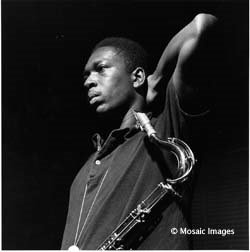






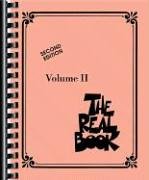
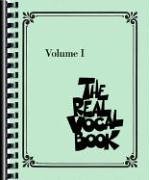







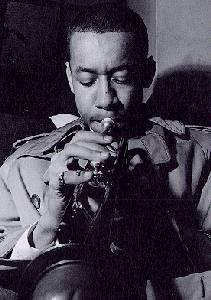






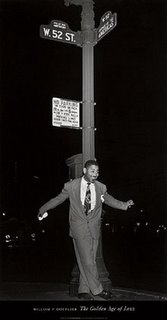 "The Street", as she was known simply by musicians and their audience was also known for their "after-hour jam sessions" experiment in which musicians again after their big band commitments according to your mood or improvise Thus, the rather bland and could escape to the time boring games in the Big Bands and Dance Orchestras of the country. There were no more rules, improvisation is very important and there was an interpretation of jazz music.
"The Street", as she was known simply by musicians and their audience was also known for their "after-hour jam sessions" experiment in which musicians again after their big band commitments according to your mood or improvise Thus, the rather bland and could escape to the time boring games in the Big Bands and Dance Orchestras of the country. There were no more rules, improvisation is very important and there was an interpretation of jazz music. 

